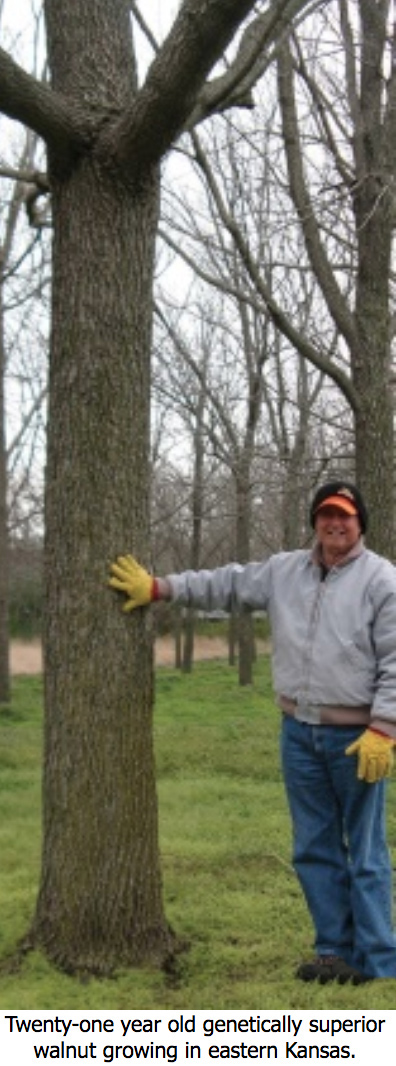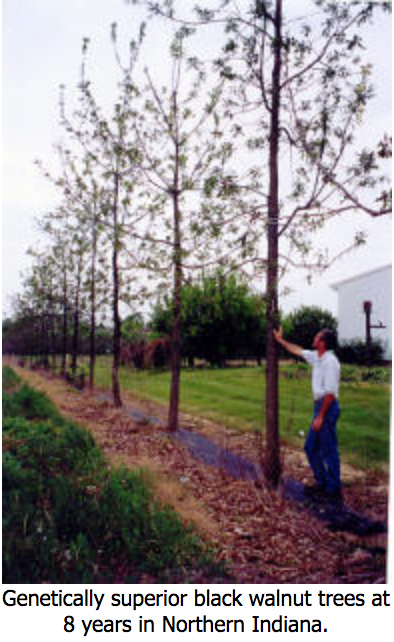Black Walnut Trees - Questions & Answers
1. What are genetically superior black walnut trees?
These trees are the result of decades of research by a forest geneticist from a leading midwestern university. Originally, scion wood was collected from over 400 black walnut trees throughout the Midwest that had superior form. Through a selection process using form and growth rate as criteria, the geneticist determined the most superior trees. Over the years, through genetic selection of successive generations, trees with increased growth rate, vigor and vitality have been developed while maintaining superior form. The two most famous cultivars patented by the university are Purdue Number One and Tippecanoe Number One.
2. What are the main differences between the improved seedlings and the grafted trees?
The grafted trees are genetically identical clones of the parent cultivars described above. The superior seedlings are grown from the nuts of these trees as well as the original Purdue Number One cultivars. As such, the seedlings will vary somewhat from their parent trees but will still possess much better genetics than common seedlings.
3. Is the genetically superior walnut tree cultivar really that much better than common seedlings?
A prime veneer log could well be worth $2,000 to $5,000 or more in 30 years if past trends continue. The forest geneticist who developed the genetically superior trees estimates that only a fraction of (1%) common black walnut seedlings will have the same growth and form characteristics as the genetically superior trees. Even when given the best care, maybe 10% will produce veneer-quality wood, but only after a period of 50-60 years or more. Results from our planting of superior seedlings show that at least 60% should make veneer grade with proper care. Except for those damaged by outside forces (lightning, wind, etc.), virtually all of the grafted trees should be veneer grade if given proper care.
4. How big are the genetically superior black walnut trees?
Sizes are listed on order form – sizes vary from crop year to crop year.
5. Will the genetically superior black walnut trees grow in my area and survive? The natural range of the eastern black walnut tree (Juglans nigra) is from southern Ontario to Texas and Alabama and from Nebraska to the Atlantic Ocean. However, genetically superior walnut trees have been planted in Florida, New England, Michigan’s upper peninsula, Idaho and even on the west coast. We recommend plant hardiness zones 4B thru 8A for grafted walnut and 4A thru 8A for seedling walnut.
The natural range of the eastern black walnut tree (Juglans nigra) is from southern Ontario to Texas and Alabama and from Nebraska to the Atlantic Ocean. However, genetically superior walnut trees have been planted in Florida, New England, Michigan’s upper peninsula, Idaho and even on the west coast. We recommend plant hardiness zones 4B thru 8A for grafted walnut and 4A thru 8A for seedling walnut.
6. What type of root system do they have?
They have a deep tap root system.
|
|

